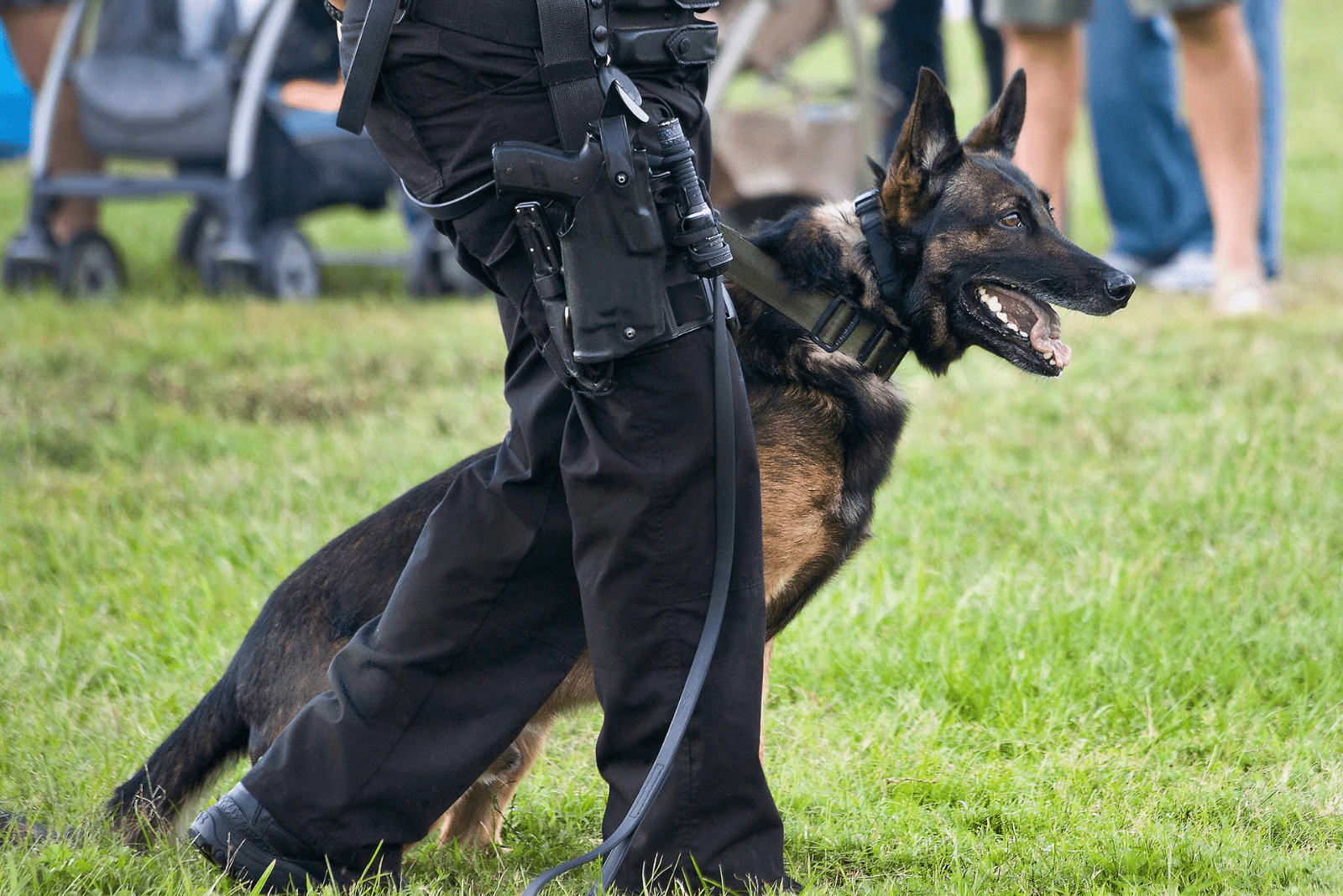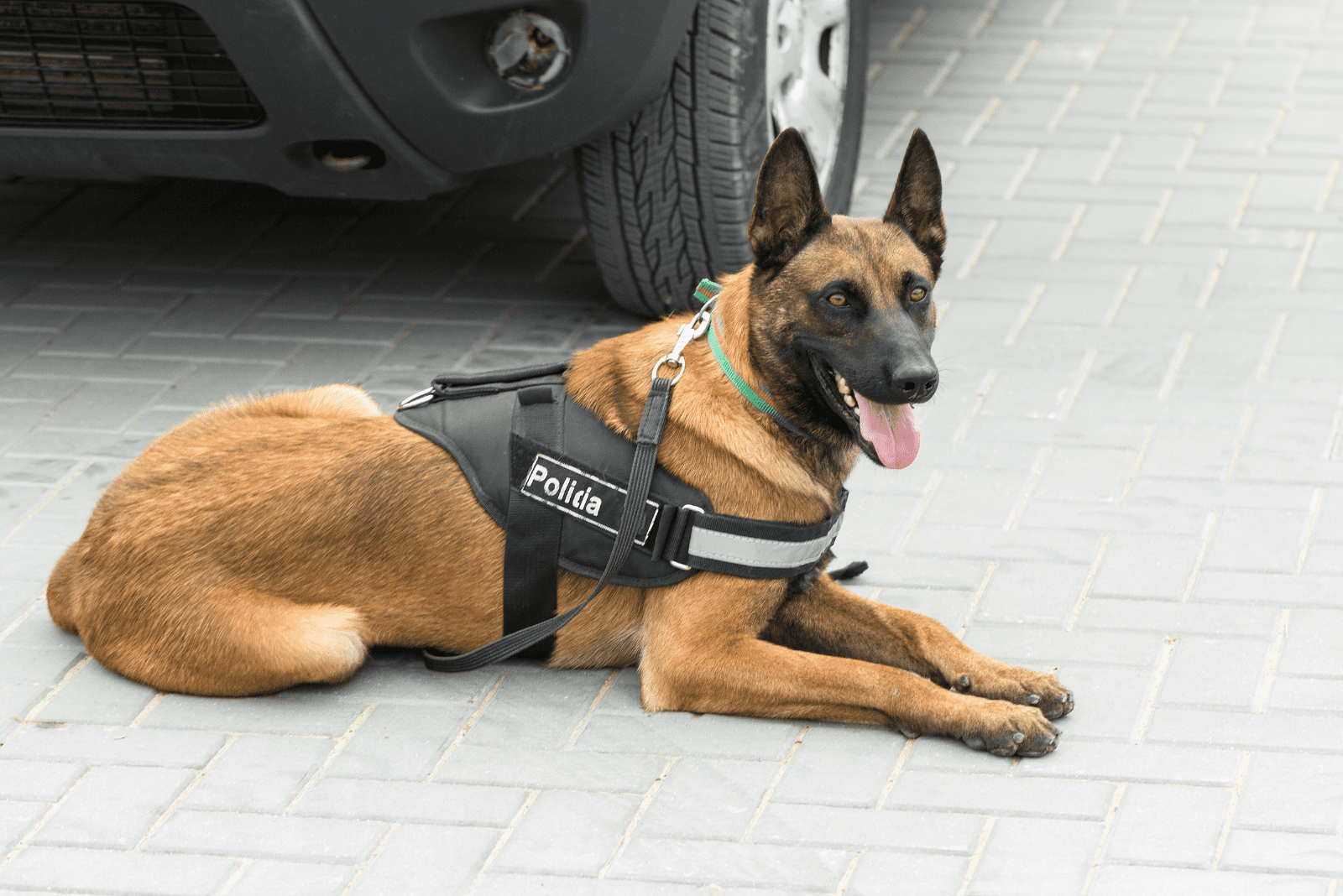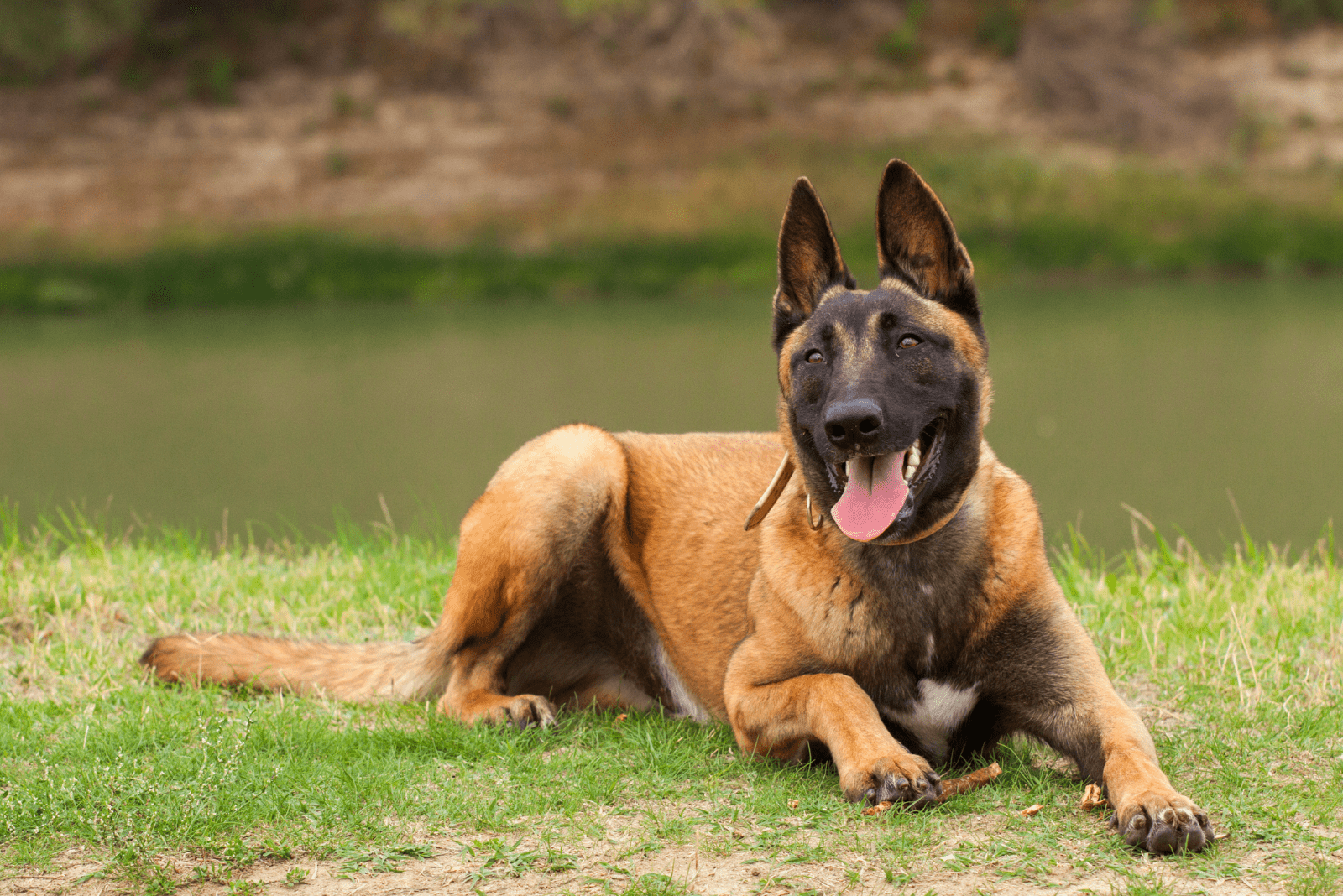When it comes to choosing a career, there are a few differences between dogs and dogs’ best friends – humans. You may think I am out of my mind, talking here about dogs having a career.
But yes, dogs thrive in many professions that we would regularly connect only with humans. These creatures are versatile, dedicated and smart.
Have you ever heard of therapy dogs or gundogs, rescue dogs or police dogs? They are also great assistance workers, hunters, service dogs, herders, detection dogs, mascots and sled dogs.
This is a pretty impressive list for a creature that can’t talk and doesn’t walk on two legs. And that is not all.
You have probably heard of war dogs or military working dogs, but the most well-known specimen is the Military Belgian Malinois.
Sounds scary, but dogs have been used in special operations (along with other animals) since ancient times. We can trace the history of war dogs to Ancient Egypt.
Later, Greek warriors used these beautiful creatures in battles. We know that they were first used in the battle between the Greek Hoplites and Cimmerians.
A famous dog even accompanied Alexander the Great on his war journeys. Named Peritas, he was a molossos-type dog that entered history.
The list does not end with the Greeks. Today’s Cane Corso is probably a descendant of Roman war dogs. Slavs, Persians, Britons and Alans used them too.
Later, we would see them throughout the Middle Ages, during the conquering of the New World, in the American Civil War, in World War I and World War II, and also in modern warfare.
You have perhaps heard of Sergeant Stubby, Smoky, Gander, Lucca or Cairo. These patriotic dogs have put us all in their debt.
The least we can do is to learn more about today’s most prominent military dog – the Military Belgian Malinois.
The Military Belgian Malinois
Is there any difference between a Military Belgian Malinois dog and a regular Belgian Malinois dog? Sure there is. Military Belgian Malinois’ have a permit to carry weapons, while regular ones do not.
Certainly, this military version leads an exciting life full of danger and with a lot of action. They know all the top secrets of the government and prepare for secret special operations in the field.
Such an exciting life for one pooch! But, if we consider the nature of this dog breed, we can understand why they are the perfect choice for such a task. Let’s find out what it is all about!
What Is A Military Belgian Malinois?

The short answer would be – the new favorite dog of the U.S. military. From U.S. Navy SEALS to Marines to U.S. Air Force, Belgian Malinois became a must-have MWD.
This energetic pup has many traits that are suitable for the military tasks a dog has to handle. They started off as police dogs in America in 1908 as part of the New York City Police Department; the rest is history.
Why Does The Military Choose Belgian Malinois?
The military has a long history of using dogs for many tasks. They used to discover bombs with the help of Labrador Retrievers, and Dutch Shepherds are awesome multi-purpose canines; the name of the German Shepherd says it all by itself.
But why do security forces nowadays choose Belgian Malinois more often then some other breeds like GSDs? The answer is simple. Belgian Malinois are much lighter and more agile than any other dog breed.
Being lighter is especially important on missions that include jumping from helicopters or airplanes or even tall buildings. Dogs and dog handlers are often do tandem jumps with parachutes.
This means that these dogs can be skydivers and they can even do it on their own. That is much safer if the dog has to land in water, or to be precise – dive.
There is a special trait of Belgian Malinois where they run at high speed toward a suspect and bites them with tremendous force. But these dogs are also trained not to lethally harm the suspect. It is called a fur missile.
Another special trait of this dog is that they can mark the safe path in a field of explosives without getting hurt or blown up to help handlers find a safe way through. Amazing!
Great Achievements Of A Military Belgian Malinois

Maybe the most famous military Belgian Malinois undertaking was the takedown of Osama Bin Laden, the former Iraq ruler. It was a Belgian Malinois named Cairo who had the duty and honor to secure the rest of the team on the mission Neptune Spear in Pakistan.
It was another military Belgian Malinois hero that took down Abu Bakr Al-Baghdadi, a leader of ISIS. This dog was named Conan and he was injured during that action, because he was in a tunnel when Abu’s crew blew themselves up.
Then there was Lucca, who was a true explosive detector for six years. He went on many missions with the U.S. Marines in Afghanistan and Iraq.
And there are many more maligators who gave themselves to defend the country. You can definitely say they are a new military trend dog.
How To Train Military Belgian Malinois?
Dog training is a complicated process in itself but training a dog for military tasks is even tougher. If you want a military Belgian Malinois then you have to start by training a Belgian Malinois puppy.
The official base for training military Belgian Malinois in the USA is at Joint Base San Antonio – Lackland. Dog trainers give their best to raise the toughest military dogs. They say that 90% of dogs who enter a training program won’t pass it.
And there is a lot that one small puppy has to take in during the process of training that actually never ends. Since day three of their life, the puppy is taken away from their mother and tested with sensations that are loud and unpleasant.
Some Belgian Malinois can show signs of aggression or they just can’t adapt to these conditions. But, if they can pass all of this, they can be fearless on the battlefield.
Through this process they learn how to swim and are tested for fear when there is no sight of land around. Later they are tested on jumping from heights.
The aim is to train the dog to be stable enough to handle stressful situations and to be so obedient that it stops an attack on command.
What Is A Belgian Malinois?

Well, I guess it is clear that it is a dog. But what kind of a dog? Many say that this dog looks like a German Shepherd, but they are not related and German Shepherds are a lot bigger and less agile than Belgian Malinois.
What we do know is that it is a dog that has proved themselves capable of many tasks. They are equally great in search, guiding, detection, assistance, as a companion and as a guard, police and rescue dog.
Just make sure you know what you are doing in training. It is a demanding breed that needs a lot of activity, both mentally and physically and trust me when I say that they will not be happy if you forget to take them to workout from time to time.
So, let’s understand them a bit better.
The Belgian Malinois Roots
It is a story of four brothers; a Groenendael, Laekeonis, Tervuren and Malinois. Such mythical names sound like some ancient warriors. But their basic job, although demanding, is weaponless.
They differ a lot based on their coats in the first instance, and they are completely different breeds even though some people think of them all as Belgian Shepherds.
Here we have a battle about the classification of these pooches. While the American Kennel Club classifies these four as separate breeds (Belgian Malinois breed standard), the United Kennel Club thinks that they are all one – a Belgian Shepherd.
It is a Chien de Berger Belge in the original and it sounds so fine. Belgian Malinois is part of the reasonably large group of herding dogs. These sheepdogs or shepherd dogs had a demanding task of defending their flocks of sheep from all kinds of predators.
This sheepherder background made this dog a perfect candidate for the special forces, so today we have a military Belgian Malinois. All his experience on the field with sheep is well used in the battlefield.
First, you need to know how to pronounce the name of this superfine pooch. It sounds something like mal-in-wah, but give that wah a little more ah; it is a French accent, after all.
This dog was designed in Belgium, a small country in Europe, a little bit more to the north than to the south, so it can be cold there. It has been around since the 1800s.
The dog was developed somewhere in Belgium but it got its name after the city of Malines. They were first to organize a club to promote the breed. So now you know why we call them Malinois.
Belgian people are so proud of their multi-purpose canines that they have a Club du Chien de Berger Belge. They managed to track down today’s Belgian Malinois roots to a man named Adrien Janssens who had a dog back in 1885 named Vos de Laken.
Vos de Laken and his sweetheart Lise were the great grandparents of our Belgian Malinois. And not just them, but also today’s Dutch Shepherds and Bouvier des Flandres.
Although they are of the same origin, there are differences between Belgian Malinois and Dutch Shepherd.
Their career as police service dogs started off in the departments of the Belgian police. They had proved themselves in police dog trials to be a suitable breed for police action.
When the First World War started, it was an opportunity for this dog to prove themselves as a true Belgian Malinois Military dog.
Finally, other military units recognized that the value of this dog is more than just a family pet or a guard dog, and today they are part of every important military action.
The Belgian Malinois Features
Lifespan: You can expect your Belgian Malinois to live 14 to 16 years on average. Of course, there are always exceptions to this rule.
Size: There is a difference between male and female Belgian Malinois. It is probable that he will grow up to 24 to 26 inches while she will grow 22 to 24 inches. You can check the Belgian Malinois growth chart against how big your dog is to determine which phase of development they are in.
Weight: Adult males can reach 60 to 80 pounds, while adult females can reach 40 to 60 pounds. If you are not sure on what to feed your Belgian Malinois, or how much to feed your pooch, check out this feeding chart. The amount of food depends on whether you have a young or old Belgian Malinois.
Hair: Belgian Malinois typically have short dense hair, so make sure you get the right shampoo to maintain their shiny and healthy hair. This dog is probably going to shed so it is wise to invest in a good brush and vacuum cleaner. If your Belgian Malinois has long hair then it is probably one of they’re cousins we are talking about, not them.
Colors: Do you wanna know all the Belgian Malinois colors? There is red, fawn, red sable, fawn sable, cream, liver, gray, black, brindle, blue fawn, mahogany, black and tan, white. It really depends on which Kennel Club you ask. He could also have a black mask.
Health: The most frequent diseases that Belgian Malinois owners face are hip and elbow dysplasia and problems with their eyes.
Personality: One thing is sure, the Belgian Malinois is a hard-working dog who needs a lot of exercise to be happy. It is one of the smartest dogs out there and when they bond with their human, that bond is for a lifetime. One must be a skilled trainer to pull the best out of this dog.
To Wrap It Up On Military Belgian Malinois
To wrap it up, Military Belgian Malinois are super dogs when it comes to completing missions. It is a breed that has all the right traits in just the right amounts.
You can train them, though not easily, they are super speedy, have a high drive for action and almost never get tired. On top of that, they can endure high pressure and don’t easily get scared. They can perform both in the heat and in the cold.
With their sense of smell they are very useful in detection and with their strength they are very good at taking down suspects. Since they listen to commands, suspects don’t necessarily need to be hurt. It is a law enforcement in a furry shape.
And best of all, they develop a bond so strong that it is almost unbreakable.
READ NEXT:
Belgian Malinois Lab Mix: What To Expect From A Hybrid Dog
Belgian Malinois Names: Find The Best Name For Your Mal
How Much Does A Belgian Malinois Cost? All You Need To Know















